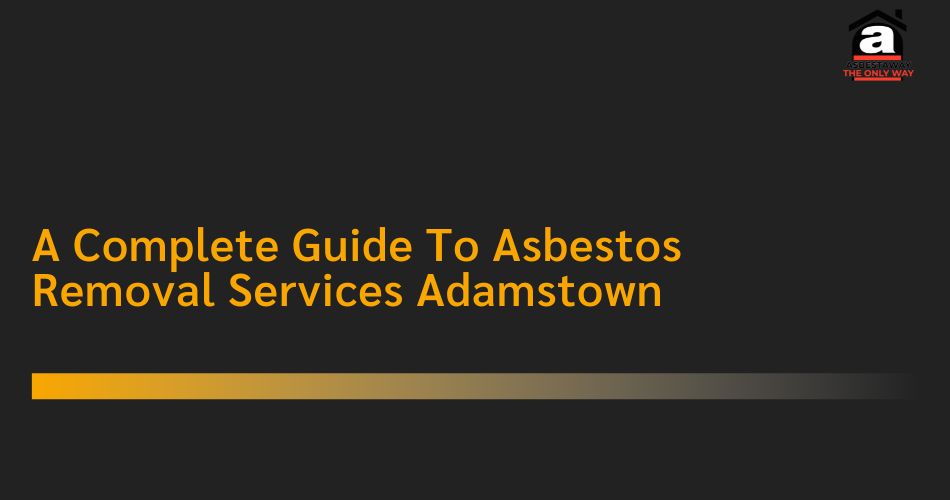Asbestos, once hailed for its durability and fire-resistant properties, has become infamous for its severe health risks. Used extensively in construction and manufacturing until the late 20th century, materials containing asbestos can pose significant dangers when disturbed or deteriorated. In Adamstown, as in many other regions, the awareness of these risks has led to an increasing demand for professional asbestos removal services.
This guide aims to equip homeowners and property managers in Adamstown with essential knowledge about asbestos, the importance of its safe removal, and how to choose a qualified service provider. We will explore the types of asbestos-containing materials (ACMs) commonly found in buildings, the process of asbestos removal, safety considerations, and the specific reasons why Asbestaway stands out as a trusted service provider in the region. By the end of this guide, you will have a comprehensive understanding of asbestos removal services, enabling you to make informed decisions regarding the safety and well-being of your property and its occupants.
What is Asbestos?
Asbestos refers to a group of naturally occurring fibrous minerals that have been used in various industries due to their desirable physical properties, such as insulation, heat resistance, and tensile strength. There are six main types of asbestos, with chrysotile (white asbestos), amosite (brown asbestos), and crocidolite (blue asbestos) being the most commonly used in construction materials.
Health Risks Associated with Asbestos
Exposure to asbestos fibers can lead to serious health issues, including:
- Asbestosis: A chronic lung disease that results from inhaling asbestos fibers, causing lung tissue scarring and respiratory problems.
- Lung Cancer: Prolonged exposure significantly increases the risk of developing lung cancer, especially in smokers.
- Mesothelioma: A rare and aggressive cancer primarily affecting the lining of the lungs, abdomen, and heart, almost exclusively linked to asbestos exposure.
Due to these severe health risks, the handling and removal of asbestos-containing materials require specialized training and equipment.
Common Sources of Asbestos in Homes and Buildings
In Adamstown, properties built before the 1980s are more likely to contain asbestos. Common sources include:
- Insulation: Pipe insulation, attic insulation, and boiler insulation.
- Flooring: Vinyl tiles and the backing of some carpeting.
- Roofing: Asbestos cement shingles and roofing felt.
- Wall Materials: Textured paints, plaster, and drywall materials.
If you suspect that your property contains ACMs, it is crucial to seek professional assistance to assess and safely remove these materials.
The Asbestos Removal Process
Step 1: Inspection and Assessment
The first step in the asbestos removal process is a thorough inspection by a certified professional. This involves:
- Conducting air quality tests to detect the presence of asbestos fibers.
- Identifying and mapping out all potential ACMs within the property.
- Evaluating the condition of the materials (intact, damaged, or deteriorating).
Step 2: Developing a Removal Plan
Once the assessment is complete, the removal team will develop a detailed plan that outlines:
- The methods and procedures for safe removal.
- The necessary containment measures to prevent the spread of asbestos fibers.
- The timeline for the removal process.
Step 3: Preparation and Containment
Before removal begins, the area must be properly prepared to ensure safety. This includes:
- Sealing off the work area using plastic sheeting and negative air pressure systems to prevent contamination.
- Informing occupants of the property and advising them to vacate during the removal process.
- Equipping workers with appropriate personal protective equipment (PPE), such as respirators, disposable coveralls, and gloves.
Step 4: Safe Removal
The actual removal of asbestos involves:
- Carefully extracting ACMs without disturbing them more than necessary.
- Using wet methods to minimize dust and fiber release.
- Properly bagging and labeling all asbestos waste for disposal in accordance with local regulations.
Step 5: Cleanup and Disposal
After the removal process is complete, the area undergoes a thorough cleaning. This includes:
- HEPA vacuuming to remove any residual asbestos fibers.
- Conducting a final air quality test to ensure that the area is safe for reoccupation.
- Transporting the waste to a licensed disposal facility.
Step 6: Final Inspection and Clearance
Finally, a qualified professional will conduct a final inspection to verify that all ACMs have been safely removed and that the area meets safety standards for reoccupancy.

